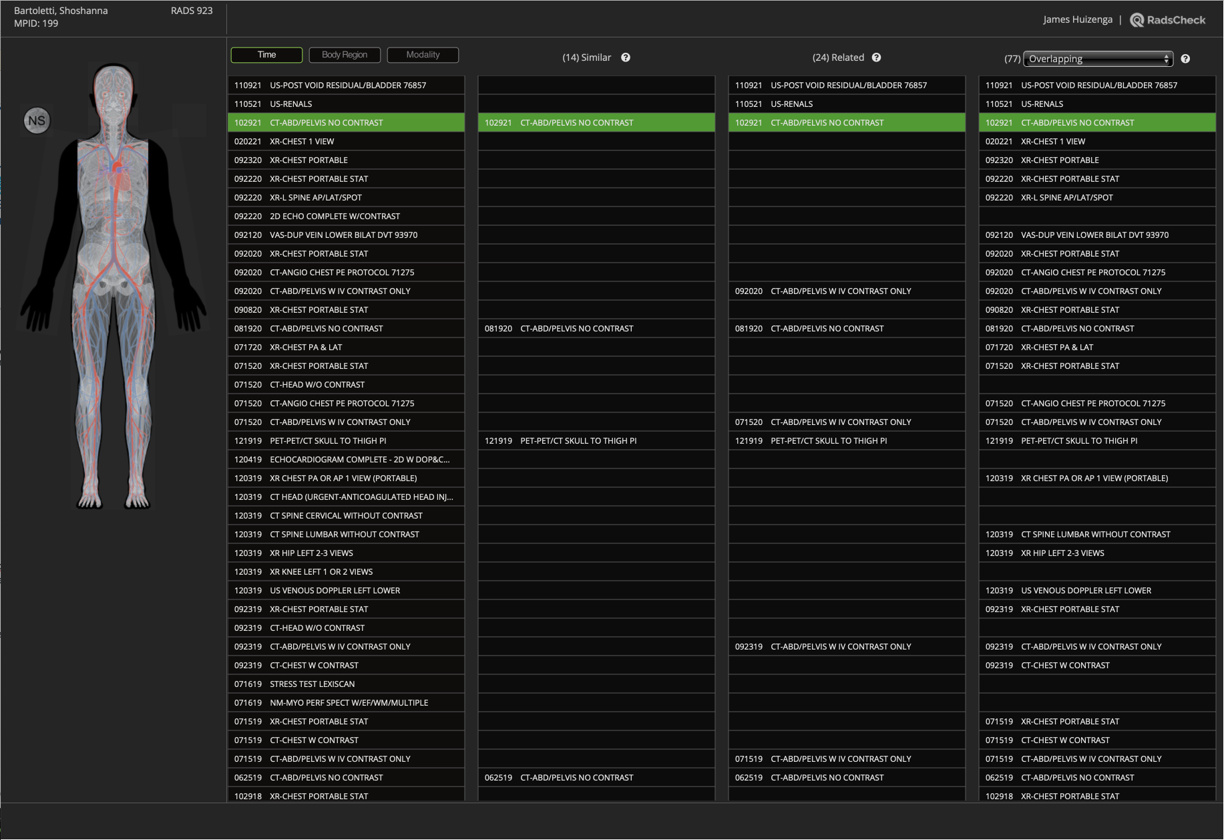RadsMap
Radiology Procedure Metadata – Mapped, Checked and Delivered
….see your data like never before
RadsMap is our answer to the need for a standardized set of radiologic metadata that will finally enable enhanced workflow, research, AI/ML, business intelligence, pre-authorization and more…just like that which exists for almost every other area of medicine.
RadsMap is a data service that takes any client procedure description, identifies it, and enriches it with robust and standardized metadata. There is no need to adhere to a given standard, simply provide a procedure description from your database, PACS, RIS, EHR, HL7, or CDR and RadsMap will do the rest.
RadsMap metadata is delivered through a standard set of APIs and automatically delivers the following discrete metadata elements:
- Modalities
- Descriptive Elements
- Body Regions
- Contrast
- Body Systems
- Vascular
- Arterial
- Venous
- Cardiac
- Respiratory
- Breast
- Obstetric
- Gastrointestinal
- Urinary
- Hepatopancreatobiliary
- Nervous
- Lymphatic
- Reproductive
- Bony focus indicator
- Soft tissue focus indicator
- Interventional indicator
- Angiography indicator
- Reading Specialties
- Relationships between metadata attributes
- Homunculus Image
With RadsMap metadata consistently applied across all your radiologic procedures, you can easily design and build advanced functions into any radiology process.
For instance, with just a modicum of code that leverages RadsMap metadata you can create sophisticated relationship modeling like never before. In the sample application below, the rule for finding related procedures is built entirely off the RadsMap metadata API response using the following simple logic:
Given Reference study X, find all related Y where:
- There is at least one region and body system match
- There is at least one region match and Reference is CT or MR
- There is at least one related region and one related modality and
- Reference isBony and Related is NOT Angio
- Reference IsSoft and Related is NOT isBony
- Reference isBony and Related is NOT ifSoft
- Reference isBony and Related is NOT Angio
Other such rules for Similar, Overlapping, Adjacent, and Unrelated exist (but are even simpler in construction)

Learn More About Partnering with CliniCentric
If you would like to learn more about working with CliniCentric, and how you can help make your HIE’s data a routine and valuable part of patient care, please complete the form below and we will be in touch.